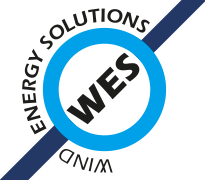Community Microgrids – the hard return on soft factors
A microgrid is a complex technical system. Good technical engineering is of great importance in developing a project as well as financial engineering. After all, financing methods and interpretation of the proposition (buying, renting or a PPA) determine the feasibility of funding. These are the main hard factors of executing developing a facility on land. Yet the success is also determined by soft factors. As WES we have experienced this many times, we have learned the hard way, that the soft elements are most crucial in such a process. That is why we like to share our insights into the hard return on handling the soft factors right.
Soft aspects of project development
No news but very important, to check showstoppers from stakeholders in advance. The environment and politics have a major influence on building utilities on plots of land. When an idea for a microgrid arises, coordination is crucial. This can be done by pitching ready-to-implement plans, but even better is co-creating a solution with all stakeholders which creates support by common interest.
When the environment is involved in the realization, this accelerates in the execution. The investment in communicating all participable information, enthusiasm and involvement is the best investment that can be made!
Soft aspects of the technical design
One of the challenges one meets in realising a microgrid is balancing energy supply and demand. Proper balancing eliminates the need for costly energy-storage components.
With most renewable energy sources it’s not possible to regulate the energy supply. What can be done is adjusting the electrical load. Most ‘measures’ are determined to steer the demand, a few examples are: planning showering time, washing, turning down the heat or air conditioning, closing doors and windows etcetera. In reality this never happens when imposed. Influencing habits, patterns and culture is very difficult. Whilst reforms cannot be imposed from the outside, they can be encouraged.
When people themselves come up with measures and are free to make their own choices it’s a whole other story. Especially when results are clear to users, you can rely on the advantages of social control. People will check one another and encourage each other in compliance.
Soft aspects of financing
A microgrid requires a long term investment and will be recouped in a number of years. The initial investment often is a threshold in budget but also in a psychological sense. Communities and the individual members do not dare to spare such large financial assets. It’s important to design economic solutions that fits the client. Paying for usage instead of possession, that is an important one. There are many investors who would love to invest in reliable energy utilities, where trustworthy users pay lease for electricity in return. This does not actually change the cost, but an important barrier, the high initial investment cost falls away. This eliminates the tense pressure of choice (what do I have to choose / do I have to choose now?), which is a very logical consequence but often crippling. In addition, the freedom to scale up the facilities is important for investors as well, as is the possibility to connect other new (renewable) energy-sources in the future.
The conclusion of naming and removing soft factors is important and works
At WES soft factors are a key in developing our projects. Financial and technical engineering are the backbone, but the soft factors make it a real solution. By paying a lot of attention to this, we are experiencing the acceptance of solutions. By involving all stakeholders and co-create our solution we have saved a lot of money in both the development phase and the phase of use.
Want to know more about how to deal with these soft factors? Request our checklist via info@windenergysoluitions.nl




Leave a Reply
Want to join the discussion?Feel free to contribute!